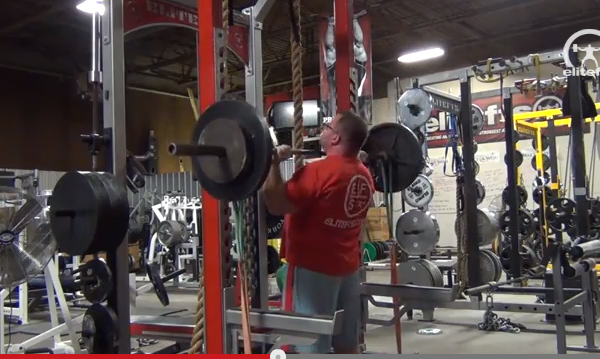
Elitefts.com™ Director of Education Mark Watts performing a set of Military Press using the elitefts™ Pro Bands. The accommodating resistance of the bands allows for more motor-unit and thus muscle fiber recruitment to coincide the the athlete's strength curve. The bands force the lifter to press through the entire range of motion eliciting more effort through the duration of the repetition. Bands can actually add stability at the top of the movement if set-up correctly due to the bands pulling the weight straight down.
Set-Up
With the overhead press, the first band is usually a light or average depending on your strength level and application of the exercise. These should be set up almost identical to the squat depending on the lifter's height. The second band is usually a mini-band or monster mini-band doubled through the first band.
Programming
Incorporating bands into a normal training cycle is relatively easy. Ensure you have the proper band tension based on your strength levels. Just like the squat, take height into account between lifters. This can also be magnified with arm length for any overhead press. One way to implement bands is to keep the weight static and adjust band tension.
4 Week Strength Cycle with Static Weight (Off-Season)
1.) Base Week: 60-75% with light band and monster mini
2.) Load Week: 60-75% with average and min-band
3.) De-Load Week: 60-75% with light band and mini-band
4.) Test Week: 60-75% with average and monster mini
4 Week Tapering Cycle with Static Weight (In-Season)
1.) 50-65% with average and monster mini
2.) 50-65% with average and min-band
3.) 50-65% with light band and monster mini
4.) 50-65% with light band and mini-band









2 Comments